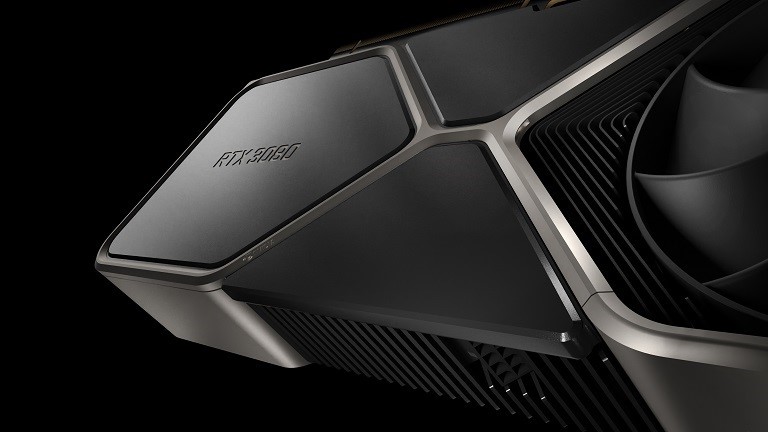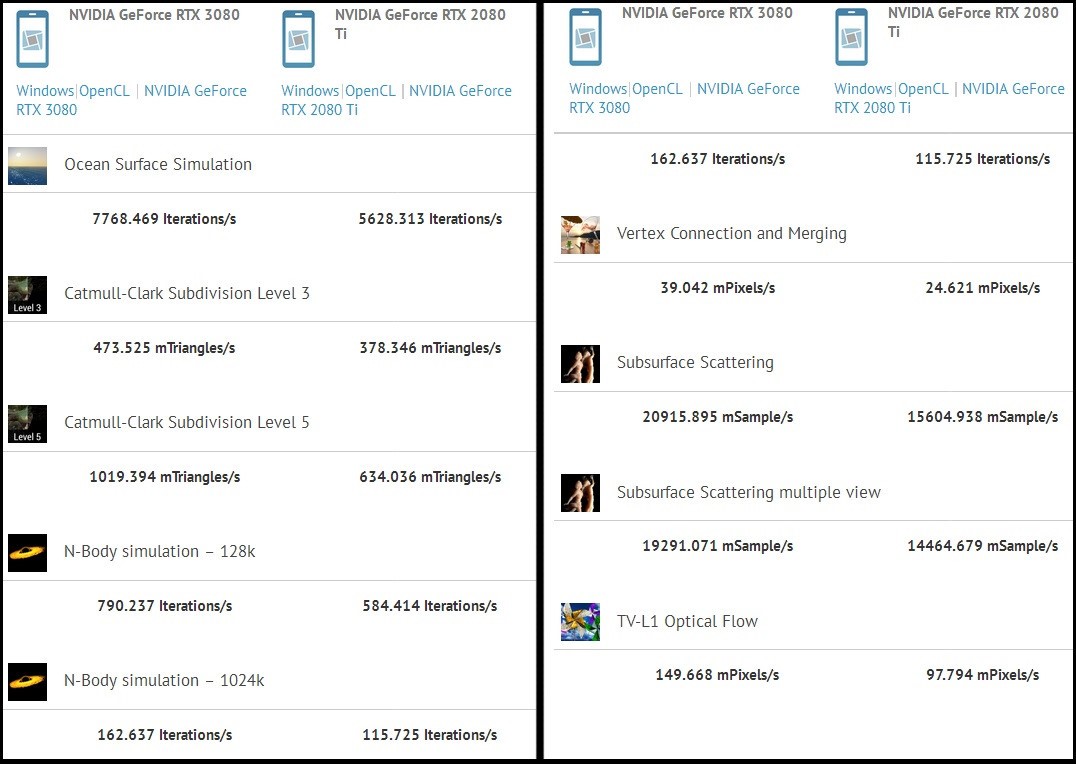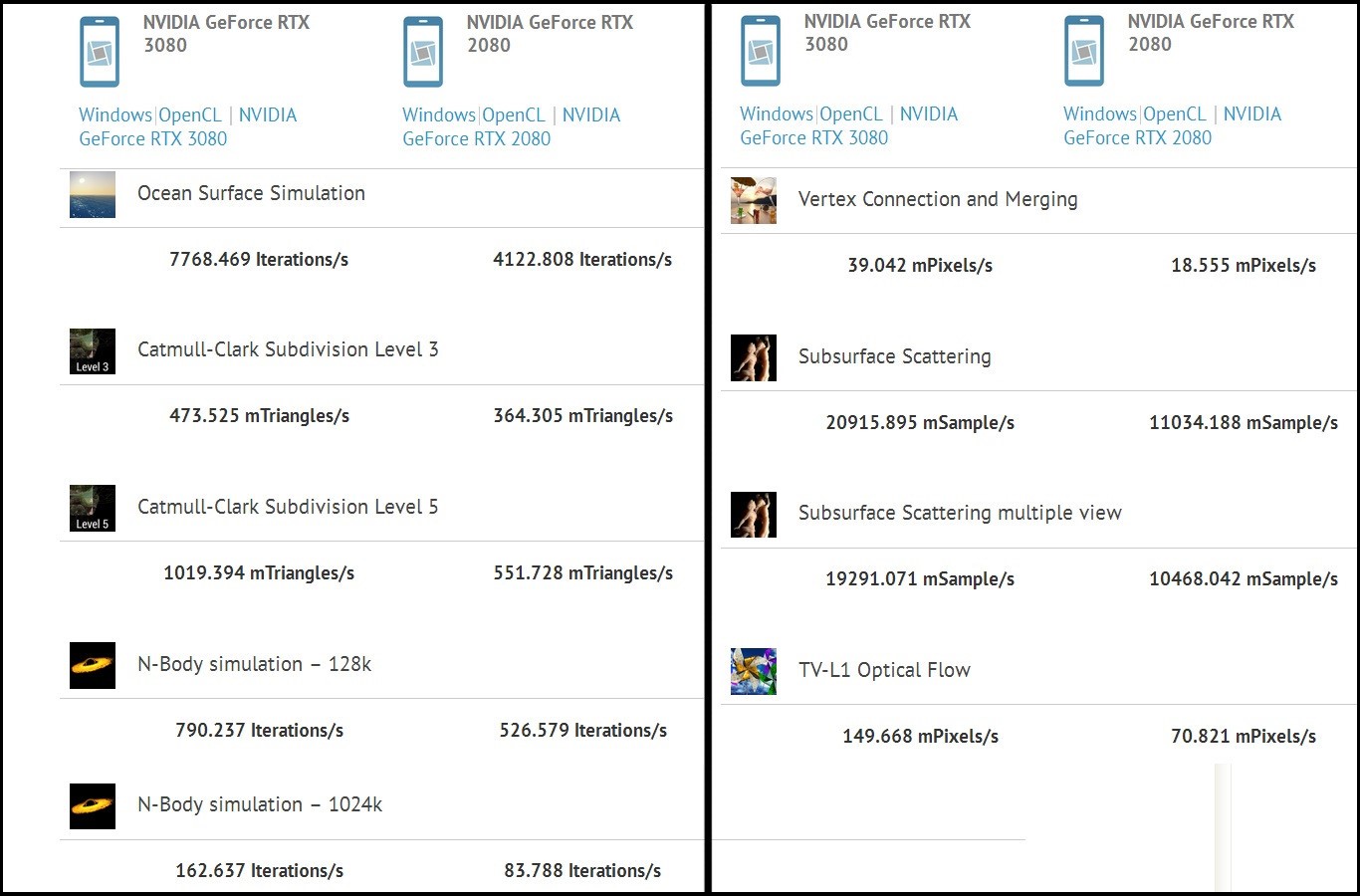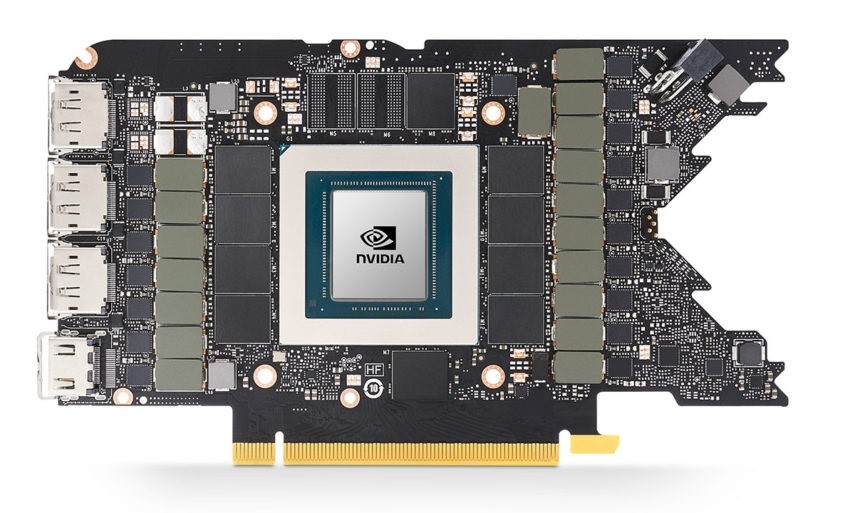Published :9/8/2020 1:18:44 AM
Click Count:2103

This running score was exposed by the famous data miner Tum Apisak. In the game special effects test and rendering benchmark test, the GeForce RTX 3080 can be said to kill the GeForce RTX 2080 in seconds, and even beat the RTX 2080 Ti easily in every test. For example, in the vertex connection and merge test, the RTX 3080 delivered 39.042 mPixels/s (the higher the number, the better), while the RTX 2080 Ti was 24.621 mPixels/s (3080: +59%), and the RTX 2080 was 18.555 m/Pixels/s (3080: +110%). In a more direct ocean surface simulation test (simulating ocean waves), the RTX 3080 score is 7768.469 Iterations/s, which is more than 38% higher than RTX 2080 Ti and 88% higher than RTX 2080. It is worth mentioning (see below Screenshot). In the Catmull-Clark subdivision level 5 benchmark, the RTX 3080 is even faster than the RTX 2080 Ti by 60.78%.

▲RTX 3080 vs RTX 2080 Ti

▲RTX 3080 vs RTX 2080
Nvidia GeForce RTX 3080 has a total of 8704 CUDA cores, equipped with next-generation RT cores and tensor cores. In terms of video memory, the GeForce RTX 3080 is equipped with 10GB GDDR6X video memory, from Micron, with speeds up to 19.0 Gbps, 320bit wide, and bandwidth up to 760 Gbps.
In addition, NVIDIA has now announced the public version of the PCB design of GA102 GPU, which is more compact and smaller than the previous one, and uses a V-shaped notch design to make room for the upper fan. RTX 3080 and RTX 3090 share this PCB design.

The picture above is the version of RTX 3080. We can see that this PCB has 12 video memory soldering positions. RTX 3080 is equipped with 10 1GB GDDR6X video memory chips. It is inferred that RTX 3090 is equipped with 12 2GB GDDR6X chips. .
This PCB is powered by up to 20 phases of VRM and is located on both sides of the GPU. DrMOS and tantalum capacitors are mostly placed on the back of the PCB. The RTX 30 series also uses the Molex Microfit 12 pin interface, which can provide up to 300W of power. NVIDIA will not restrict Intel and AMD from using this connector on the graphics card.
The power consumption of the RTX 3090 is 350 W, but only uses two 8 pin PCIe power inputs (150 W each), which obviously limits its overclocking performance. In other words, the RTX 3090 launched by the partner manufacturer will use three 8-pin PCIe power inputs to achieve better overclocking performance.